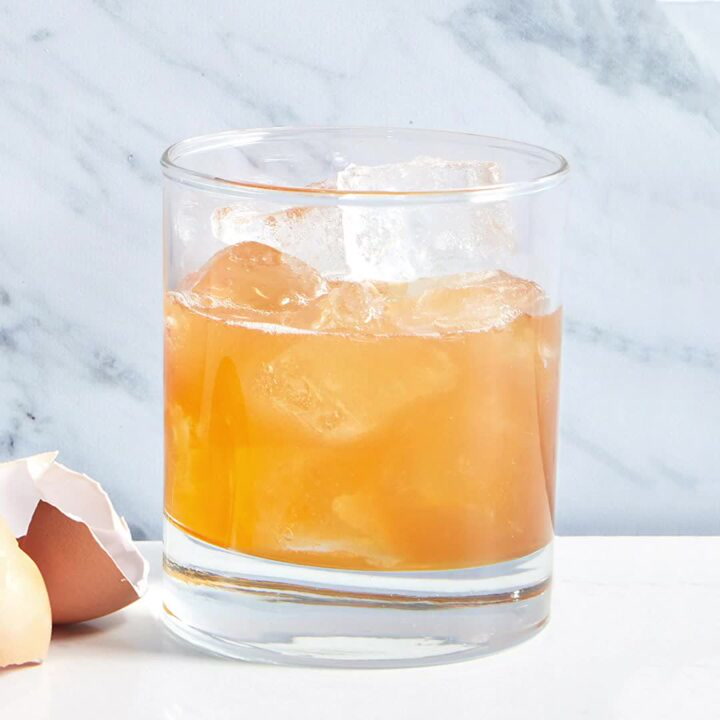Add spent coffee grinds to brownies for turbo-charged flavor, or turn citrus peels into aromatic seasoning salts.
And more than one-third of that stems from wasteful kitchen habits.
That’s the equivalent of taking almost 1.2 million cars off the road for a year.

Photography / Jenny Huang, Food Styling / Tyna Hoang, Prop Styling / Nicole Louie
Your pocketbook could also benefit from reducing waste, to the tune of $1,300 a year.
That’s the average amount each American spends on food that ends up in the trash.
Ready to do something about it?

Let’s get started!
Later, use the pit to grow your own avocados!
Bananas may also be frozen for use later in smoothies or in your favorite baked goods.

Photography / Jenny Huang, Food Styling / Tyna Hoang, Prop Styling / Nicole Louie
Or you might get a compost bin for your yard.
(Some backyard bins and commercial operations can handle meat and compostable packaging as well.)
Use the sniff test on dairy products
Dairy products rival vegetables as the most-wasted food category in U.S. households.

Instead of automatically dumping your dairy when the “use by” date passes, give it a sniff.
If it smells OK and there’s nothing fuzzy growing on it, use it up fast.
Most dairy products also freeze well.

Photography / Jenny Huang, Food Styling / Tyna Hoang, Prop Styling / Nicole Louie
Shred hard cheese first.
In general, this meansseparating fruits from veggies, with a few exceptions.
Label and date everything that goes into the freezer
Freezing is one way to reduce food waste at home.

Many foods can be stashed in the freezer to preserve freshness for three months or more.
Check your list when planning meals to ensure you use frozen foods before their quality diminishes.
Spent coffee grounds intensify the flavor of chocolate
Grounds from your morning cup of joe can be repurposed.

Photography / Jenny Huang, Food Styling / Tyna Hoang, Prop Styling / Nicole Louie
Add a scoop to brownies and chocolate cake to boost the chocolaty-ness.
Gardeners can till grounds into the soil, where they’ll attract earthworms that will aerate the soil.
Instead, invest in a reusable coffee filter.

Get the recipe:Spent Coffee Grounds Ice Cream
8.
Switch to reusable kitchen towels
Kitchen cleanup can produces a lot of waste.
Make the switch to reusable “un-paper” towels, usually made from cotton, bamboo or sugar cane.
Toss them into soups or make a meal for one or two.
Combine similar shapes with the same cooking timedoes it matter if they match when you’re eating dinner?
Organize your fridge and pantry by the “first in, first out” mantra.
The same goes for shelf-stable items.
Transfer to a bowl and let stand, uncovered, for 3 days.
Store airtight and sprinkle on just about anything (your popcorn will never be the same!).
They make a great gift too.
Use it to make Any-Brine Chicken with Herb Pan Sauce.
Get the recipe:Any Brine Chicken with Herb Pan Sauce
15.
Go easy at Costco
Quantity buys may seem like a good deal.
Re-fill your favorite jars at the grocery store
Reusable containers can help reduce plastic waste.
Before they rot, bake a batch of Wilted Greens Dog Treats.They’re Fido-approved!
Juice your aging citrus and store the juice in a microwave-safe container in the freezer.
If the peel is still good, zest before juicing andyou guessed itfreeze that too.
Use it to (sorry!)
add zest to cocktails, baked goods, risotto, vinaigrettes, compound butter and more.
These dates are not regulated or even required by the USDA (except on infant formula).
So what do those labels actually mean?
“Use By"is the last date when the manufacturer considers the food will remain at peak quality.
“Sell By"is used for inventory management only.
Stale bread, random shards of cheese, leftover veggiesit’s all welcome in the baking dish.
Get the recipe:Vegetable Panade
22.
Store them cut-end down in a glass of water in the refrigerator to keep ‘em crisp.
Refrigerate extras for up to 4 days.
Use the yolks to make your own mayo or acustard for ice cream.
And either can be whisked into whole eggs foromelets,frittatasandscrambles.
Or freeze whites and yolks for up to 3 months.
Know thy fridge and utilize its hot/cold spots
Zone in on the warm and cool areas of your fridge.
The warmest spot is the door, so stash your condiment collection there.
The lower shelf tends to be the coldest: keep eggs, dairy products and raw meat there.
And keep your produce in the crisper drawerthat’s what it’s designed for!